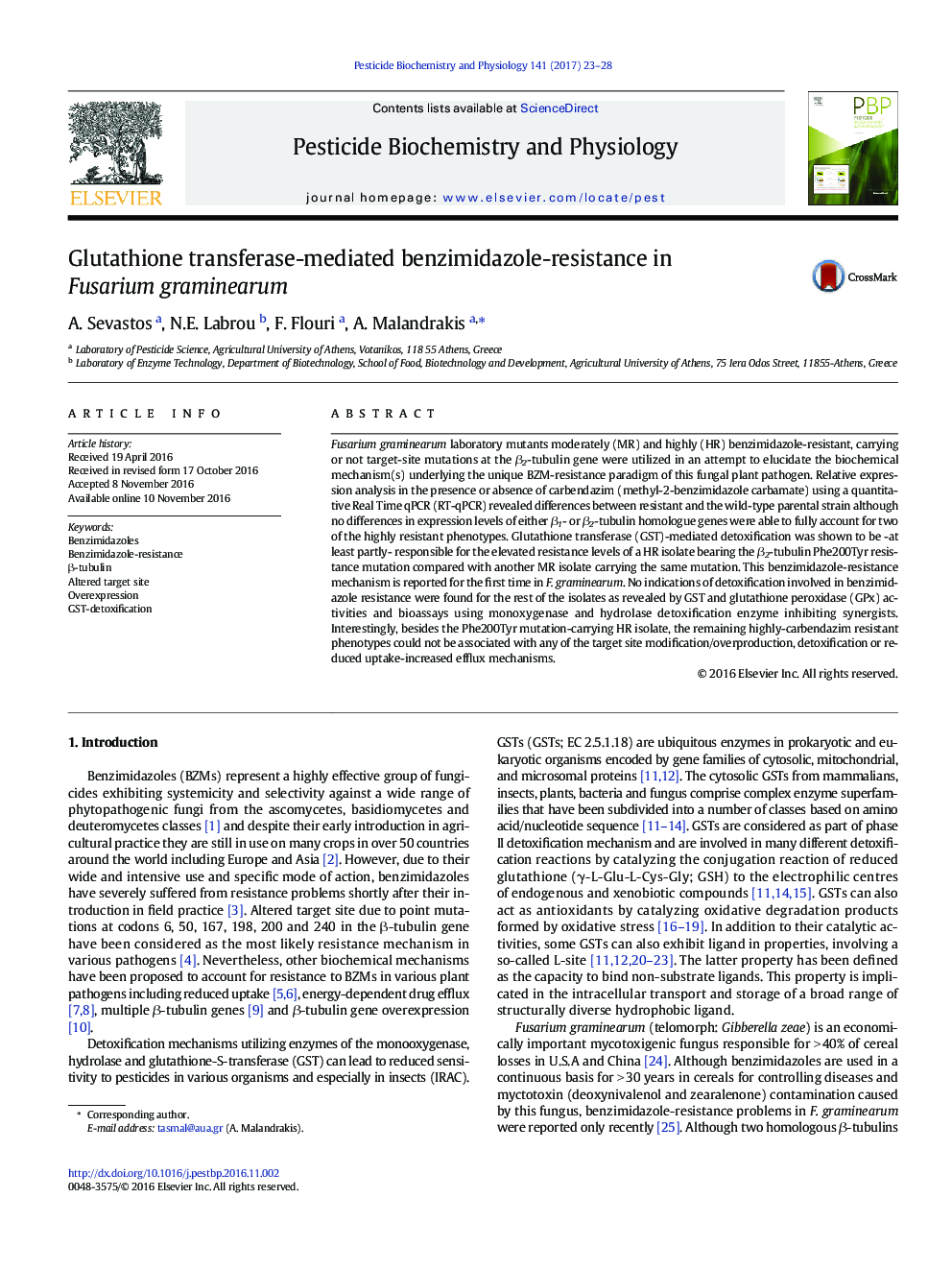| Article ID | Journal | Published Year | Pages | File Type |
|---|---|---|---|---|
| 5514819 | Pesticide Biochemistry and Physiology | 2017 | 6 Pages |
â¢GST-assosiated MBC-resistance in a highly resistant strain carrying the F200Y mutation in the β2-tubulin geneâ¢Constitutive overexpression of the β2-tubulin gene might contribute in MBC-resistance.â¢Induced overexpression of β1 or β2-tubulin genes could not be associated with MBC-resistance.â¢Two HR-strains with resistance mechanism(s) other than target site modification, efflux or detoxification
Fusarium graminearum laboratory mutants moderately (MR) and highly (HR) benzimidazole-resistant, carrying or not target-site mutations at the β2-tubulin gene were utilized in an attempt to elucidate the biochemical mechanism(s) underlying the unique BZM-resistance paradigm of this fungal plant pathogen. Relative expression analysis in the presence or absence of carbendazim (methyl-2-benzimidazole carbamate) using a quantitative Real Time qPCR (RT-qPCR) revealed differences between resistant and the wild-type parental strain although no differences in expression levels of either β1- or β2-tubulin homologue genes were able to fully account for two of the highly resistant phenotypes. Glutathione transferase (GST)-mediated detoxification was shown to be -at least partly- responsible for the elevated resistance levels of a HR isolate bearing the β2-tubulin Phe200Tyr resistance mutation compared with another MR isolate carrying the same mutation. This benzimidazole-resistance mechanism is reported for the first time in F. graminearum. No indications of detoxification involved in benzimidazole resistance were found for the rest of the isolates as revealed by GST and glutathione peroxidase (GPx) activities and bioassays using monoxygenase and hydrolase detoxification enzyme inhibiting synergists. Interestingly, besides the Phe200Tyr mutation-carrying HR isolate, the remaining highly-carbendazim resistant phenotypes could not be associated with any of the target site modification/overproduction, detoxification or reduced uptake-increased efflux mechanisms.
Graphical abstractDownload high-res image (188KB)Download full-size image
